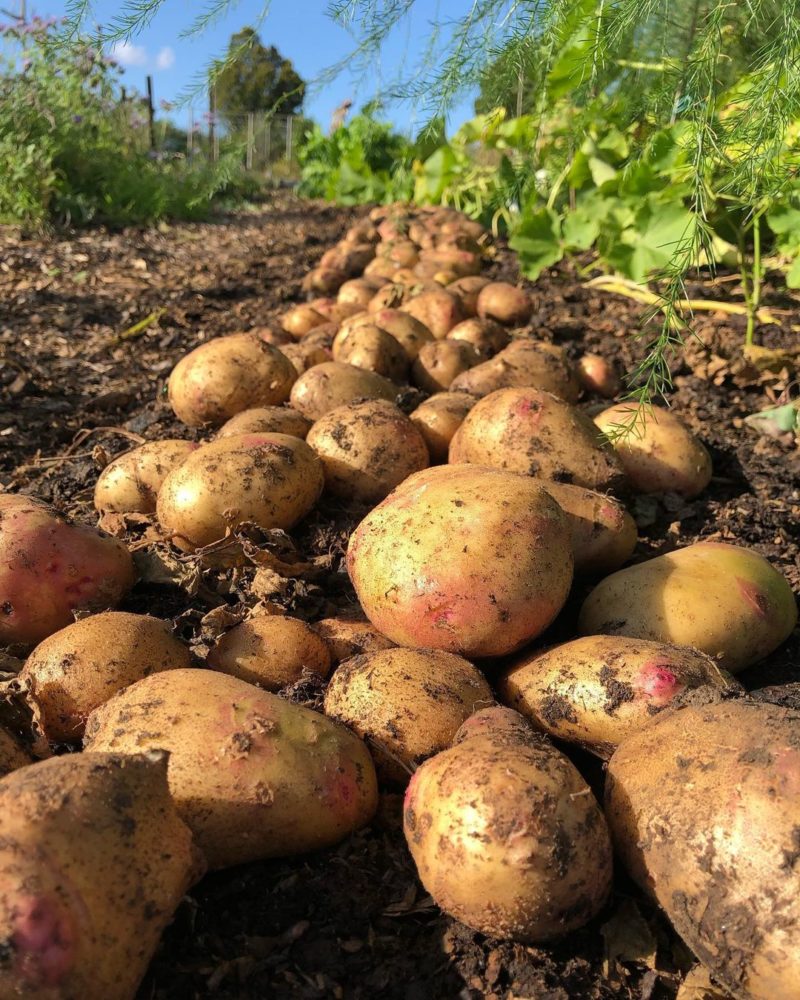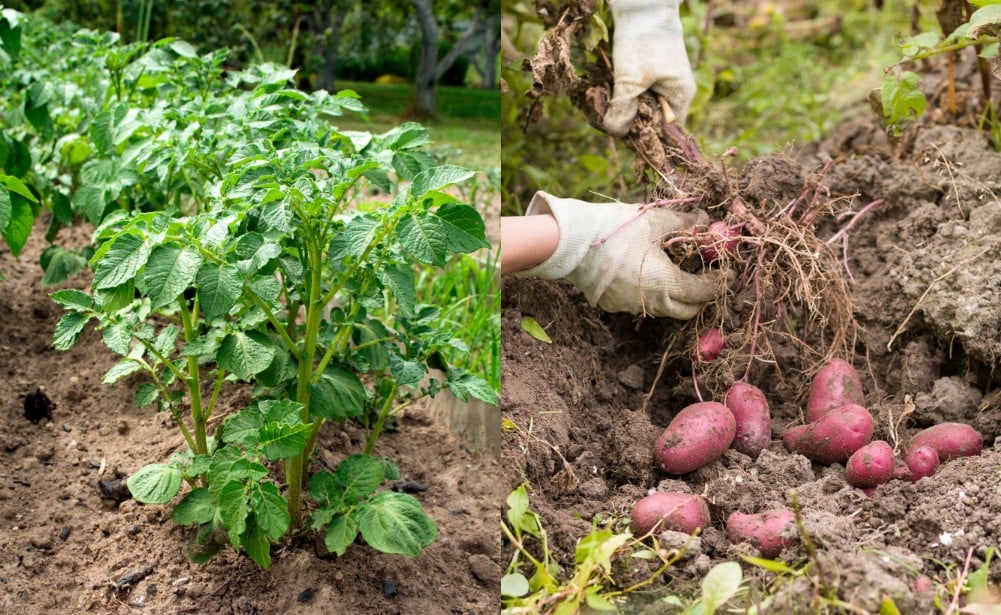Cultivating Success: The Art of Growing Potatoes
Unlocking the Secrets of Potato Growth
Growing potatoes can be a rewarding experience, but it requires a deep understanding of the growth cycle and factors that influence it. By grasping the intricacies of potato growth, gardeners can optimize their cultivation techniques to produce a bountiful crop. One of the primary benefits of growing potatoes is the unparalleled freshness and flavor of homegrown produce. Unlike store-bought potatoes, which may have been stored for months, homegrown potatoes can be harvested and consumed within days, offering a more vibrant and intense flavor profile. Moreover, growing potatoes allows individuals to have complete control over the cultivation process, ensuring that their potatoes are grown using sustainable and environmentally friendly methods. As we delve into the world of potato growth, a fundamental question arises: how long does it take to grow a potato? While the answer may vary depending on several factors, understanding the growth cycle is essential for anticipating the harvest period and enjoying a successful crop.
The Ideal Conditions for Potato Growth
Creating an optimal environment for potato growth is crucial for a successful harvest. Four essential factors contribute to the ideal conditions for growing potatoes: soil quality, temperature, moisture, and sunlight. Soil quality is paramount, as potatoes require a well-draining, loose soil with a pH between 4.5 and 7.0. Temperature also plays a significant role, with potatoes thriving in temperatures between 40°F and 70°F (4°C and 21°C). Adequate moisture is vital, with potatoes requiring consistent and moderate watering. Finally, potatoes need partial sunlight, with at least 6 hours of direct sunlight per day. To create an optimal environment, gardeners can take several steps, including testing and amending the soil, providing adequate irrigation, and selecting a location with suitable sunlight and temperature conditions. By understanding and controlling these factors, gardeners can set their potatoes up for success and enjoy a bountiful harvest.
How to Plant Potatoes for Maximum Yield
Planting potatoes requires careful attention to detail to ensure a successful harvest. The first step is to choose healthy seed potatoes, which should be certified disease-free and have at least one “eye” each. Next, prepare the soil by loosening it to a depth of 12 inches and adding organic matter such as compost or manure. When planting, space the seed potatoes 12 inches apart, with the “eyes” facing upwards. Plant them 2-4 inches deep, depending on the variety, and cover with a thin layer of soil. As the plants grow, add more soil or mulch around the base, leaving only a few inches of the leaves exposed. This process, known as “hilling,” helps to protect the tubers from sunlight and promotes healthy growth. Avoid common mistakes such as planting too deeply or too closely together, which can lead to reduced yields and increased risk of disease. By following these simple steps, gardeners can set their potatoes up for success and enjoy a bountiful harvest.
The Stages of Potato Growth: From Seed to Harvest
The growth cycle of potatoes is a complex process that involves several stages, from sprouting to tuber formation. Understanding these stages is crucial for gardeners to provide optimal conditions and care for their potato crop. The first stage, sprouting, occurs when the seed potato begins to grow, typically within 1-2 weeks of planting. As the plant grows, it produces stems, leaves, and roots, which eventually give rise to tubers. During this stage, it’s essential to provide adequate moisture, sunlight, and nutrients to promote healthy growth. The next stage, tuber formation, occurs when the plant begins to produce small, immature tubers. This stage is critical, as it determines the final yield and quality of the potatoes. Regular monitoring is necessary to prevent pests and diseases, which can significantly impact the crop. Finally, the mature tubers are ready for harvest, typically within 70-100 days of planting, depending on the variety. By understanding the different stages of potato growth, gardeners can take proactive steps to ensure a successful harvest and enjoy the fruits of their labor.
The Waiting Game: How Long Until Harvest?
One of the most common questions asked by potato enthusiasts is, “How long does it take to grow a potato?” The answer depends on several factors, including the variety of potato, climate, soil quality, and growing conditions. Generally, potatoes take around 70 to 100 days to mature from planting to harvest. However, this timeframe can vary significantly depending on the specific conditions. For example, potatoes grown in cooler climates may take longer to mature, while those grown in warmer climates may be ready sooner. Additionally, some varieties of potatoes, such as “new” potatoes, can be harvested in as little as 50 days, while maincrop potatoes may take up to 120 days. It’s essential to be patient and regularly monitor the crop’s progress to ensure a successful harvest. By understanding the factors that influence growth rate and being mindful of the general timeline, gardeners can plan and prepare for a bountiful harvest.
Tips for a Bumper Crop: Managing Pests and Diseases
As potatoes grow, they can be susceptible to various pests and diseases that can significantly impact the yield and quality of the crop. To ensure a bumper harvest, it’s essential to take proactive measures to manage these threats. One of the most effective ways to prevent pests and diseases is through crop rotation. By rotating potato crops with other non-related crops, gardeners can break the life cycle of pests and diseases, reducing the risk of infection. Additionally, maintaining healthy soil through the addition of organic matter and proper fertilization can help to boost the plant’s natural defenses. When it comes to controlling pests and diseases, gardeners have a range of options, including natural methods such as introducing beneficial insects and using neem oil, as well as chemical controls like fungicides and insecticides. However, it’s crucial to use these methods judiciously and only when necessary, as overuse can lead to the development of resistant pests and diseases. By being vigilant and taking prompt action, gardeners can minimize the impact of pests and diseases and enjoy a healthy, thriving potato crop.
Harvesting Your Potatoes: When and How
After weeks of nurturing and care, the moment of truth finally arrives – it’s time to harvest your potatoes But when exactly is the right time to dig up your spuds, and how do you do it without damaging the tubers? The answer lies in careful observation and gentle handling. Start by checking for signs of maturity, such as yellowing leaves and stems, and gently digging around the plants with a fork to avoid damaging the tubers. For maincrop potatoes, wait until the tops of the plants have died back completely before harvesting. For new potatoes, you can start digging as soon as the plants are in flower. When digging, be careful not to pierce or bruise the tubers, and lift them out of the soil gently. Once harvested, store your potatoes in a cool, dark place to maintain their freshness and flavor. With proper harvesting and storage techniques, you can enjoy your homegrown potatoes for weeks to come.
Conclusion: Enjoying the Fruits of Your Labor
With the right knowledge and techniques, growing potatoes can be a rewarding and delicious experience. By understanding the growth cycle, creating optimal conditions, and managing pests and diseases, gardeners can enjoy a bountiful harvest of fresh, flavorful potatoes. Remember, patience and regular monitoring are key to success, as it can take around 70 to 100 days to grow a potato. By following the tips and advice outlined in this article, readers can confidently embark on their own potato-growing journey and reap the rewards of homegrown produce. So why not give it a try? With a little effort and dedication, you can be enjoying the fruits of your labor in no time!







